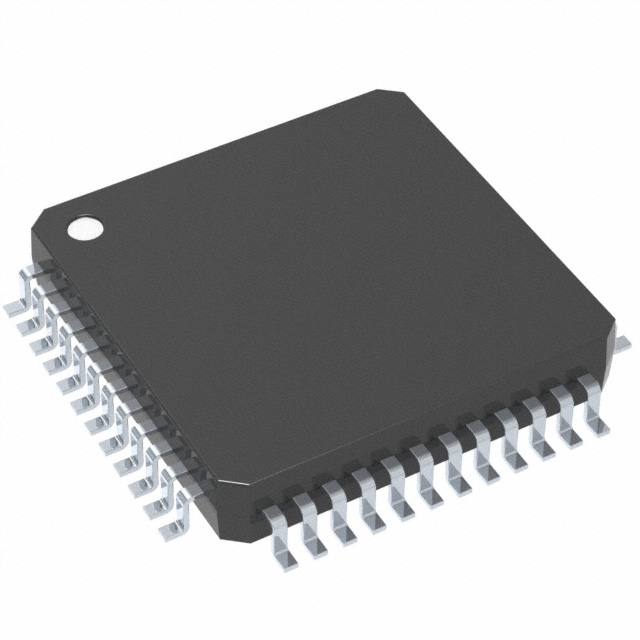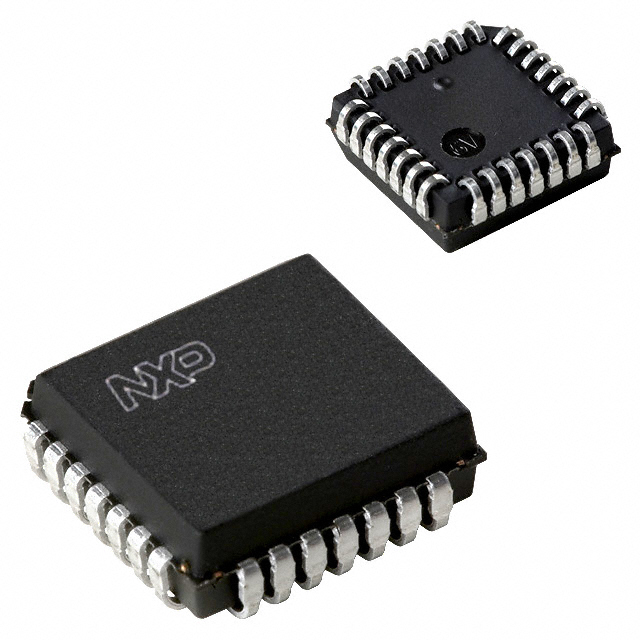PIC16F19197T-I/PT
Manufacturer No:
PIC16F19197T-I/PT
Manufacturer:
Description:
IC MCU 8BIT 56KB FLASH 64TQFP
Datasheet:
Delivery:





Payment:




In Stock : 51
Please send RFQ , we will respond immediately.









PIC16F19197T-I/PT Specifications
-
TypeParameter
-
Supplier Device Package64-TQFP (10x10)
-
Package / Case64-TQFP
-
Mounting TypeSurface Mount
-
Operating Temperature-40°C ~ 85°C (TA)
-
Oscillator TypeInternal
-
Data ConvertersA/D 45x12b; D/A 1x5b
-
Voltage - Supply (Vcc/Vdd)2.3V ~ 5.5V
-
RAM Size4K x 8
-
EEPROM Size256 x 8
-
Program Memory TypeFLASH
-
Program Memory Size56KB (32K x 14)
-
Number of I/O59
-
PeripheralsBrown-out Detect/Reset, LCD, POR, PWM, WDT
-
ConnectivityI²C, LINbus, SPI, UART/USART
-
Speed32MHz
-
Core Size8-Bit
-
Core ProcessorPIC
-
DigiKey ProgrammableNot Verified
-
PackagingCut Tape (CT)
-
PackagingTape & Reel (TR)
-
Product StatusActive
-
SeriesPIC® XLP™ 16F
The PIC16F19197T-I/PT is a microcontroller (MCU) integrated circuit chip produced by Microchip Technology. It belongs to the PIC16F family of MCUs, which are well-known for their functionality and flexibility. Here are some advantages and application scenarios of the PIC16F19197T-I/PT:Advantages: 1. High Performance: The PIC16F19197T-I/PT chip offers a high-performance 8-bit CPU with a wide range of built-in peripherals, including timers, PWMs, UART, I2C, SPI, and more. It operates at a clock speed of up to 32 MHz, providing quick execution of instructions.2. Enhanced Core Independent Peripherals (CIPs): This MCU incorporates CIPs that offload core tasks and reduce CPU intervention, thereby increasing overall system performance. CIPs include Configurable Logic Cells (CLC), Complementary Output Generators (COG), Configurable Custom Logic (CCL), and more.3. Large Memory Options: The PIC16F19197T-I/PT supports a generous amount of program memory (up to 28 KB) and data memory (up to 2 KB). This allows for complex code execution and data manipulation in applications.4. Energy-Efficient: The chip includes features like Deep Sleep mode, which minimizes power consumption during idle periods. It also offers low-power wakeup sources and a two-speed oscillator startup to optimize power efficiency.5. Flexible Communication Interfaces: With built-in UART, I2C, and SPI modules, the PIC16F19197T-I/PT chip can easily interface with other devices, enabling communication in a wide range of applications.Application Scenarios: 1. Industrial Automation: The PIC16F19197T-I/PT can be used in industrial automation systems, controlling and monitoring various processes. Its high-performance, memory options, and communication interfaces make it suitable for complex control algorithms and data processing.2. Embedded Systems: Embedded systems often require versatile MCUs with multiple peripherals. The PIC16F19197T-I/PT's rich feature set, including timers, PWMs, and I/O pins, enables it to control and interface with various sensors, actuators, and displays.3. Home Automation: In home automation applications, the PIC16F19197T-I/PT can be utilized to control lighting, HVAC systems, security devices, and more. Its efficient power management capabilities and communication interfaces enable effective and energy-efficient home automation control.4. Consumer Electronics: With its high-speed operation and large memory options, the PIC16F19197T-I/PT chip can be used in consumer electronics devices like smart appliances, multimedia systems, and gaming peripherals.5. Internet of Things (IoT): The PIC16F19197T-I/PT's low-power features and communication interfaces make it suitable for IoT applications. It can connect to cloud platforms, interact with various sensors and actuators, and perform edge computing tasks.It's worth noting that these advantages and application scenarios are not exhaustive, and the PIC16F19197T-I/PT can be used in a wide range of other applications depending on their specific requirements and functionalities.
PIC16F19197T-I/PT Relevant information
-

LM3S8538-IQC50-A2
Texas Instruments -

LM3S1937-IQC50-A2
Texas Instruments -

LM3S1637-IQC50-A2
Texas Instruments -

LM3S1635-IQC50-A2
Texas Instruments -

LM3S1332-IQC50-A2
Texas Instruments -

LM3S1165-IQC50-A2
Texas Instruments -

LM3S1162-IQC50-A2
Texas Instruments -

LM3S1133-IQC50-A2
Texas Instruments -

LM3S308-IQN25
Texas Instruments -

P89LPC936FA,529
NXP USA Inc.






